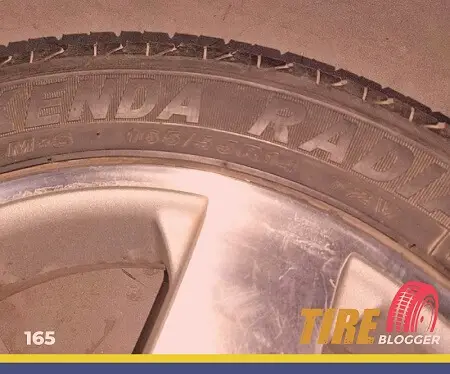Tire Size 165 FAQ

Tire sizing is essential to vehicle maintenance, as it directly impacts driving performance, fuel efficiency, and overall safety. We will also discuss the cost of 165 tires, helping you make an informed decision when purchasing new tires for your vehicle.
What Does 165 Tire Size In Inches?
A 165 tire size refers to the tire’s width in millimeters. To convert the width to inches, you can divide the width in millimeters by 25.4 since 1 inch equals 25.4 millimeters. In this case, the width of a 165 tire size is:
165 mm / 25.4 = 6.5 inches
So, a 165 tire size is approximately 6.5 inches wide. Note that this measurement refers only to the tire’s width, not its height or diameter, which are determined by the aspect ratio and wheel diameter.
165 Tire Cost
The cost of 165 tires can vary significantly based on factors such as brand, tire type (summer, winter, all-season), and performance characteristics. On average, 165 tires can range from $50 to $150 per tire. Keep in mind that these prices are approximate and may vary by retailer, region, and availability.
It’s essential to consider the initial cost and the tire’s performance, durability, and fuel efficiency, as these factors can impact the overall value and cost-effectiveness of your tire purchase.
Can You Put 185 Tires On 165 Rims?
Yes, you can replace the 165 tires with 185 tires. But Before making any changes to your vehicle’s tire size, check the doorjamb or owner’s manual to ensure that the new size is compatible with your vehicle’s specifications and performance requirements.
A 165/65R14 sized tire has a rim width mounting range of 4.5-6″, and the 185/65R14 sized tire has a rim width mounting range of 5.0-6.5 As you can see, there is an overlap between the 165 and 185 tire size rim width range.
It confirms we can use 165 tire size in the 185 tire size rim or 185 tire size in the 165 tire size rim. The circumference of the 185 is slightly larger, so your speedometer will read slightly lower than its actual speed for any given engine.

Can You Use 165 Tires Instead Of 185?
Yes, you can, but not recommended, as it represents a 20 mm difference in width. It is typically advised to stay within a 3% overall diameter difference, and limit width changes to 10-20 millimeters when upsizing or downsizing your tires.
Checking your user manual and heeding expert advice is advisable. The car was designed to use a 185-width tire, so using a tire that is 20 mm narrower will considerably decrease highway traction.
Rim Width Range For 165 Tire
The rim width range for a 165 tire can vary depending on the type of tire and its intended use. However, as a general guideline, a 4.5 to 6 inches rim width is recommended for a 165 tire. It’s important to note that using a rim width outside of the recommended range can affect the tire’s performance, including its handling, stability, and wear.
How Wide Is A 165 Tire In Inches?
To calculate the width of a 165 tire in inches, simply divide the width in millimeters by 25.4. In this case, the width is 165 mm. For example, 165 / 25.4 = 6.5 inches. This means that the 165 tire is 6.5 inches wide.
How Tall Is A 165 Tire In Inches?
The number “165” in a tire size refers to the width of the tire in millimeters, not its diameter. However, I can provide you with an estimate of the overall diameter of a tire that is sized 165/65R14, for example. Assuming the tire has a profile (aspect ratio) of 65.
Which means the sidewall height is 65% of the tire’s width, the overall diameter of a 165/65R14 tire is approximately 22.4 inches (or 56.9 cm). Remember that this is just an estimate, and the actual size may vary slightly depending on the brand and model of the tire.
Conclusion
In conclusion, the tire size 165 is a popular option for smaller vehicles and is available in various types, including all-season, summer, and winter tires. When choosing a 165 tire, it’s important to consider the vehicle’s weight, intended use, driving conditions, and the recommended rim width range for the specific tire model.
By selecting the appropriate tire size and type, drivers can enhance their vehicle’s performance, safety, and fuel efficiency and ensure a comfortable and smooth ride.

Meet Caitlin McCormack, a Tire Size Expert and Blogger Passionate About Everything Related to Tires. With Years of Experience in the Tire Industry, Caitlin Has Become an Expert in Tire Sizes and Their Impact on Vehicle Performance.
